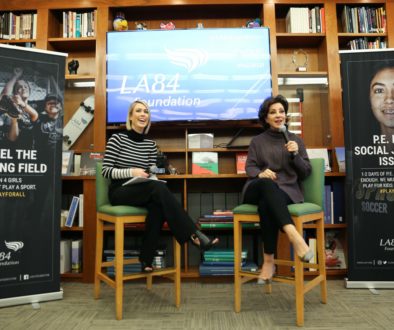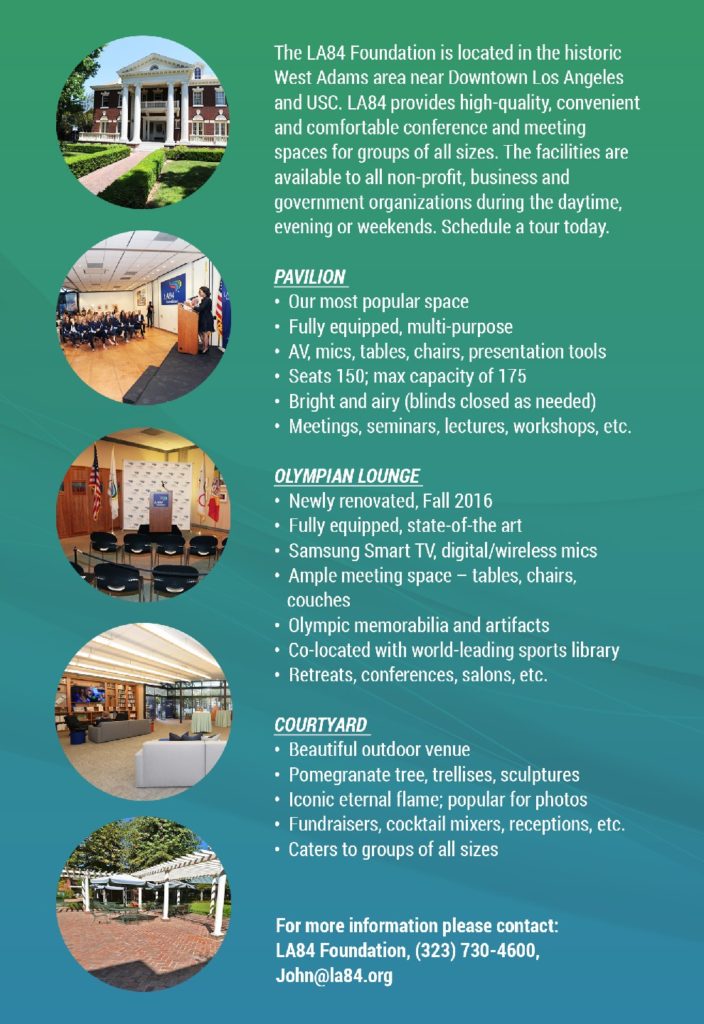SL Interview: Eric Adelson Examines the Michelle Wie Phenomenon
When Michelle Wie burst onto the golf scene, at the ripe old age of 10, she was considered a once-in-a-generation prodigy. Her picture-perfect swing was balanced and powerful; her 300-foot drives were awesome to behold. She seemed poised to challenge the best golfers on the women’s tour, not to mention fulfilling her stated goals of challenging on the PGA Tour and playing in The Masters.
In 2003, Wie won the Publinx tourney at age 13, becoming the youngest person (male or female) to win a United States Golf Association-sanctioned event. By the time she was 16, she had turned professional and recorded several Top 10 finishes on the LPGA Tour, played in tournaments against male golfers on the PGA Tour and in Asia and Europe, and signed multi-million dollar endorsement deals with (among others) Nike and Sony. Her future seemed as glorious as a Hawaiian sunset.
Her precocious start notwithstanding, Wie has not met those lofty expectations. Injuries have taken a toll – specifically, a broken wrist that she tried to play through – and she has not managed to win a tournament since the Publinx. Now 19, she is both a college student (at Stanford University) and a rookie member on the LPGA Tour. Her plans to challenge male golfers are on hold.
In “The Sure Thing: The Making and Unmaking of Golf Phenom Michelle Wie” (Ballantine Books/ESPN Books; Amazon), author Eric Adelson examines Wie’s unique and historic career. As a reporter who first wrote about Wie when she was 10, Adelson views her life both as success story and cautionary tale, one in which greed and impatience have, to date, trumped Wie’s sublime talent. He also believes that Wie has ample time to, as he writes, “seize control of her golf and her life.”
A longtime staff writer at ESPN The Magazine, Adelson is now a freelance journalist who contributes to Newsweek, Details and ESPN. SportsLetter spoke with Adelson by phone from his home in Florida.
— David Davis
SportsLetter: When did you decide to write this book?
Eric Adelson: I spoke with Michelle Wie over the phone when she was 10, in the year 2000. But I didn’t imagine that that would turn into a magazine article, let alone a book. The book only became a thought as she got closer to turning pro, when she was 15. Even then, the book was supposed to be a celebration of her pioneer status in sports. I think there’s still some hope for that, but the direction of the book definitely changed over time.
SL: How did you first hear about Michelle Wie?
EA: I was out in Hawaii doing a story for ESPN about the head coach of the University of Hawaii football team [June Jones]. Someone in the office mentioned that there was a kid on the island who could hit a golf ball a long way. At first, I wasn’t that interested, but then I found out that the kid was a 10-year-old girl. I just wanted to make sure that I covered all the bases. I didn’t want to be the idiot who had the chance to meet the next Tiger Woods and didn’t.
At that time, I just spoke with Michelle on the phone. I met her face-to-face a couple years after that, when she and her family were in Connecticut for a junior tournament. I drove up to have dinner with them.
SL: What was it like to watch her play golf at that age?
EA: Her swing was beautiful, just remarkable. There was a lot of praise for her swing back then, from people like Fred Couples, Tom Lehman and Phil Mickelson, and those people don’t exaggerate. There were people who paid admission and walked the course just to watch her swing. I believe the swing itself was worth the hype because it was a pre-teen girl doing it. I mean, if you just watched the ball and not the person hitting the ball, you’d swear it was a man’s shot.
SL: At that age, she was already talking about challenging Tiger Woods and other male golfers. Did you think that was possible?
EA: No, but I started to believe that it was possible. I never thought that she would be a top ten PGA player or that she would win the Masters. But I also traveled with her to Korea, where she made the cut at a men’s tournament on the Asia Tour. She played so well there. Her putting was coming into focus and her drives were so reliable. They weren’t the farthest, but people would run out to the 300-yard marker and wait and the ball would just land there every time. It was perfect and reliable and consistent. I figured if she improved her short game 10 or 15 percent, then she could do some damage on the men’s tour.
SL: Tiger Woods turned pro in 1996, when Michelle was seven. How big an influence was Woods on Wie?
EA: I actually have a crazy theory about this. I feel that Se Ri Pak has had more of an effect on the face of golf than Tiger. Here you have a young, South Korean woman – she was 20 when she won the U.S. Open in 1998 – and all these South Korean parents saw that and they were completely inspired. They were inspired because of the way she did it, but they were also inspired because it was a victory for the entire nation. It was truly a historic moment in the country. It’s a small, mountainous nation that, 50 years ago, had a nothing economy. Now, it’s one of the biggest economies in the world, with this up-from-nowhere belief in itself. Just a deep pride.
When Se Ri Pak won the U.S. Open, a lot of South Korean men wanted that for their daughters. They still do. Eleven years after Se Ri Pak won that tournament, the LPGA is filled with Asian faces. And it’s not that these young women just came over from Korea. They came over and won and are still winning. The story of the LPGA in this decade is the Korean players. They revolutionized that tour and changed the face of women’s golf.
I’m not going to say that Michelle Wie was directly inspired by Se Ri Pak. After all, she’s not from South Korea. She’s an American of Korean descent. But I do say that you can’t talk about the Tiger Woods effect without understanding that it was Pak, as much as Tiger, that inspired younger women to get involved.
SL: Wie took up golf at age four and as a 10-year-old practiced most every day. Was that an effort to imitate Tiger Woods and his early training under his father?
EA: I think that there’s a revisionist myth about Michelle being shoved into the game and about her father, B.J., being a Little League dad. What is not understood as well is that she could hit the ball a long way and that she loved to do it. She loved to hit the ball. She didn’t really care at first where it went. She just loved to swing the club, she loved the power, she loved the feel.
People ask me all the time, “Did she ever love golf?” I do think that she loved, loved, loved hitting the ball. To her, in the beginning, golf was that. Later, it became chipping and putting. But people fell in love with her for the same reason that she fell in love with the game: She loved to crush the ball and out hit everybody, boys and girls.
SL: After she won the Women’s Amateur Public Links Championship, at age 13, you write that Wie essentially stopped playing girls in junior and amateur golf. Why did she show such impatience?
EA: That’s also a little bit of a myth. In Hawaii, junior girls’ golf was almost non-existent. It was very hard for Michelle to get a competitive match. She didn’t want to leave her school in Hawaii – Punahou School is an amazing school, the same school where President Obama went – and so she really didn’t have much of a choice. If she was going to get any competition, it was against the boys. I think that’s where it started. There wasn’t any sense in the Wie family that, “We’re too good for girls golf.”
I think if she had grown up in Florida or California, she would have taken a slightly different path. I think she still would have gone against the men as soon as possible, but I think she would have had more junior girls golf experience.
SL: As a teen, Wie competed against men golfers, played on the LPGA tour, played in Asia, and earned millions with endorsement contracts. At the same time, she was also a high school student in Hawaii. Was this a case of too much, too soon?
EA: It’s a tricky answer. She didn’t want to give up her school and be home-schooled, she didn’t want to give up golf, and she didn’t want to give up Hawaii. I think that one of the things that really hurt her was having this buffet-style approach to life – you know, a little bit of everything. She wanted to have her cake and eat it, too. That caught up with her.
One thing the family could have done was move to the mainland to help with all the travel that they did, with all the tournaments on the Eastern seaboard. They were spending entire summers in hotels and in rental cars. How do you have a “normal childhood” doing that? But, again, that would have meant giving up the life she loved in Hawaii.
SL: In retrospect, should she have concentrated on competing against women golfers before playing against men?
EA: I disagree with a lot of her critics. I don’t necessarily think that that would have been better. I’m of the feeling that you play against the best you can play against. I know that she felt that way, too. We had many discussions about that. If you’re a concert-level pianist at age 13, you want to play Julliard.
SL: She began to suffer physical problems during this time, including wrist and hip injuries. To what do you attribute that?
EA: I think it was overuse. Genetically, she was perfect for golf except for her wrists. The strength she has in her arms and her legs and her hands put a lot of pressure and a lot of torque on her wrist.
I think where she went wrong was when the wrist injury started to flare up, she didn’t slow down. She played through it. She ignored it. Her parents either didn’t know about it or chose to ignore it. I think she felt that she was tough enough to endure the pain, that if she played through it, it would go away. I think that made it worse.
SL: How much pressure was on Michelle to please those around her, including her parents and her sponsors?
EA: She’s extremely ambitious, and she didn’t want to let anybody down. She didn’t want to let herself down, her sponsors down, her parents down. She was the “sure thing.” She was supposed to be a pioneer, to make history. It wasn’t enough for her to be good; she had to be great or even the greatest. So, yeah, she felt enormous pressure, a lot of which was self-imposed.
I think that the pressure caught up with her in one major respect. People wanted her to be a great putter and to have a complete game at 15, 16 years old. That’s really hard to do. Putting is something that’s honed over years and years, and she hadn’t practiced that part of her game much. She loved the pressure of hitting the ball a long way with the cameras watching, but the pressure of making putts was something that was new and something that was harder for her to deal with.
SL: How much was the media to blame in this scenario, in terms of hyping her talent and potential?
EA: I think a lot. I think that the media wanted something new and something fresh and something historic. I did. I’m certainly to blame: after all, I wrote the first national story about her, and I kept writing about her because I really thought that she was special. And you know what? She was special. I wasn’t writing about somebody who was shooting 100. She was shooting 68 on a PGA course at age 14. People forget how good she was. People forget how big her galleries were. A lot of people said, “She’s a media creation.” Well, she was really that good.
SL: How would you describe her parents, B.J. and Bo Wie, and the influence they had on Michelle?
EA: It’s a very, very close family, and Michelle is the only child. Even now, there are people who’ve never seen Michelle without her parents within shouting distance. The mother, Bo, is from an athletic family. She’s a perfectionist, she’s a worrier. She’s also very nurturing. The big difference between the two of them is that B.J. is an eternal optimist. He’s much more of a planner. Michelle is always looking to her mother for approval, but I think she’s grown up to be more like her father in terms of being very ambitious, very sure of herself, very unafraid.
They’re extremely involved and, to some extent, controlling about her life and career. I think part of that is a cultural difference. Most parents would probably hire a coach or a caddy or a manager and then delegate the responsibilities. They did not delegate. They were in charge of everything. B.J. was not just in charge as a father; he was in charge of Michelle’s professional life as a CEO, as a manager, as a marketer. I think that a lot of what grates the public about her father is that he’s always right there. He’s always calling the shots.
SL: You write that in May of 2006, Michelle was at the peak of her game and seemed poised to challenge male golfers. Within two years, her game had given way to “missed cuts and last-place horror stories.” What happened?
EA: I think she was overworked and overscheduled. I think that she didn’t know – and her family didn’t know — when to slow down. I think that they were too greedy and too ambitious with their schedule and their goals. There were clear signs of exhaustion, clear signs of wear, clear signs of injury that were ignored.
That happened in part because Michelle’s parents thought she could do anything and everything. There’s no question that they didn’t see any limitations on their daughter. Ever. It’s hard for me to judge that: I mean, doesn’t every parent think that their kid is special?
They basically went through the yellow light, they went through the red light and they kept going. That’s what made them great in the first place, that’s what made them millionaires in the first place. But when it was time to slow down, they didn’t know how to do that. In fact, they sped up in some cases. This wasn’t a case of too much, too soon. It was just too much.
SL: You quote Tiger Woods as saying, “You need to play and win…[and] learn the art of winning.” Wie hasn’t won at any level since her national title at age 13. What factors have prevented her from winning?
EA: I think a lot of it is putting. You have to make crucial putts to win tournaments. She was a prodigy at hitting the ball long distances; she had the perfect long game. But she was average or less than average at hitting the ball very, very short distances, in part because she didn’t start practicing that part of her game until later.
People say that she’s not mentally strong or that she’s a choker. Ultimately, it comes down to making crucial putts on Sunday. She’s getting there, but she’s not there yet.
SL: Do you think there’s still time for her to learn the art of winning?
EA: I do. I’ve always been optimistic about her. There are some people who think that she’s never going to get past that hurdle. But I believe that she’ll win. It might not be this week or even this month. But I think she’s going to win. Even now, after all she’s gone through, she’s one of the top players on the LPGA tour this year, at least with earnings. For a rookie, she’s doing well. [Editor’s Note: Wie is currently ranked 17th on the LPGA 2009 money list.]
Remember: Michelle is only 19. She’s not a mental case. She’s not somebody who’s going to get caught for drugs or DUI. She’s a very solid, intelligent person who’s optimistic like her dad. There’s plenty of time for her, and I think the wins are going to come.
SL: Will she ever live up to her potential?
EA: Well, that depends on how you define potential. If her potential is being a mainstay on the PGA Tour, I don’t think so. But if her potential is being an LPGA Hall of Famer and somebody that people remember for golf rather than for disappointment, yeah, I think there’s a chance. I do hope that there’s another book’s worth of material on her yet to write, and I hope that it’ll have a happy ending.
SL: When can we judge her career?
EA: It’s very early. Annika Sorenstam was 24 when she won her first LPGA tournament. Let’s say Michelle wins her first tournament at age 25. People are going to think that she’s a total bust, but she’ll still have at least 10 years more of her prime. I would say that she has to be 30 before we can start talking about her place in golf history.
SL: What lessons can we draw from her career thus far?
EA: You have to know when to step back. You have to know when to step back as a parent and as an athlete. You can’t have one speed, and that speed being fastest.
There are good things about big dreams, big hopes, big plans. I think we’re a country that thrives on that. And, I’m not saying that you should never aim high. But patience and reflection are also necessary, especially in a sport like golf.
One of the things that I admired about Michelle and her family is that they wanted to be pioneers, they wanted to make history. There was always the sense with the Wies that they had to do things tomorrow. But those things don’t have to happen overnight. Even if you’re an overnight sensation, you still have time.
SL: How much access did you have with Michelle and her family during the research and writing of the book?
EA: The access was much better when she was doing well. The family shut down when she started to struggle, and not just with me. I had to go to other avenues when that happened.
In a way, I was disappointed. Every reporter wants perfect access. But losing the access was a bit of a blessing because I was challenged to find other people who knew them and knew their story. I think that gave me a different perspective than I would have had if the access with the family was perfect.
SL: The book has been out now for a few weeks. Have you had any reaction from the Wie family?
EA: I have not heard from them. I could see them being okay with the book, I could see them being upset with the book. I could also see them not reading the book.




